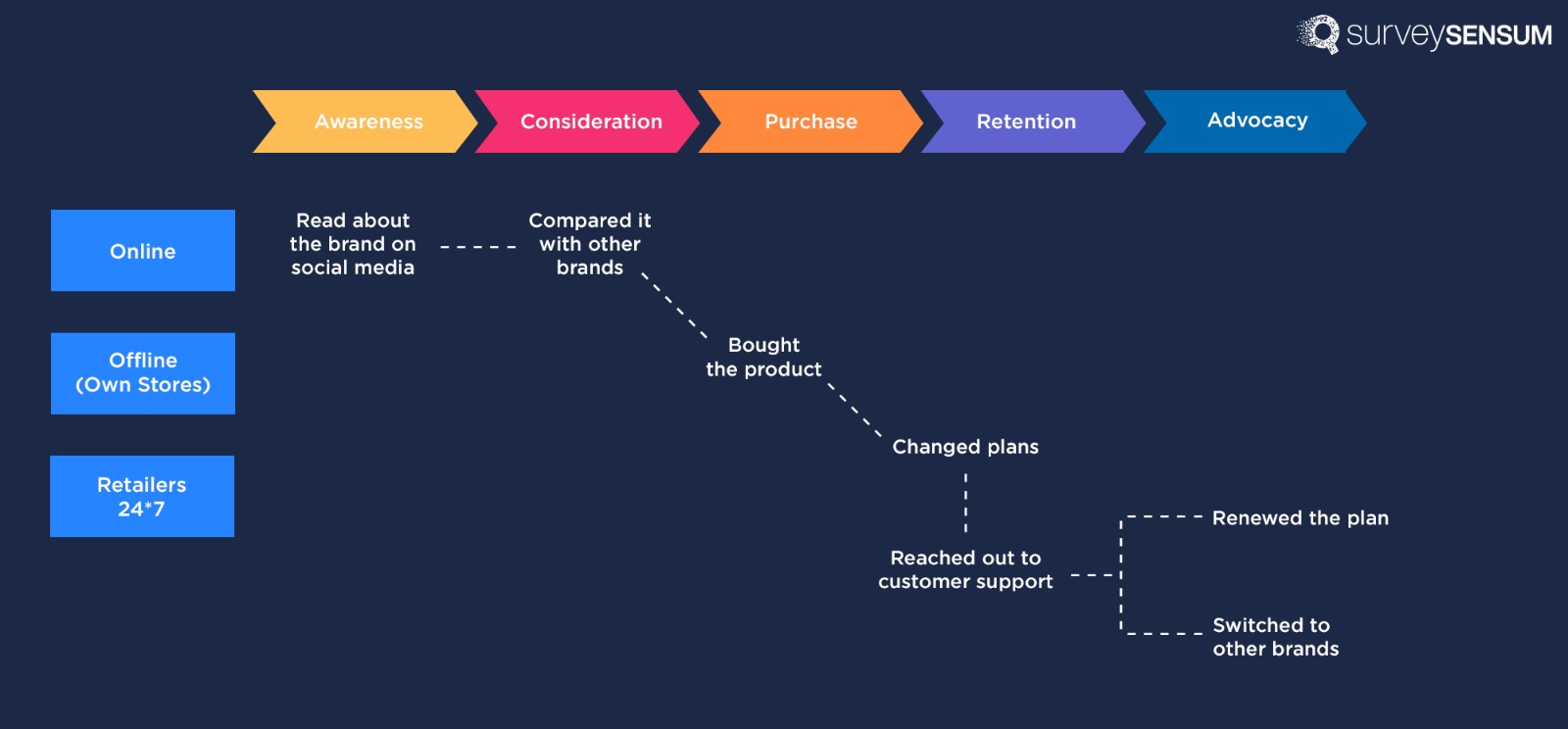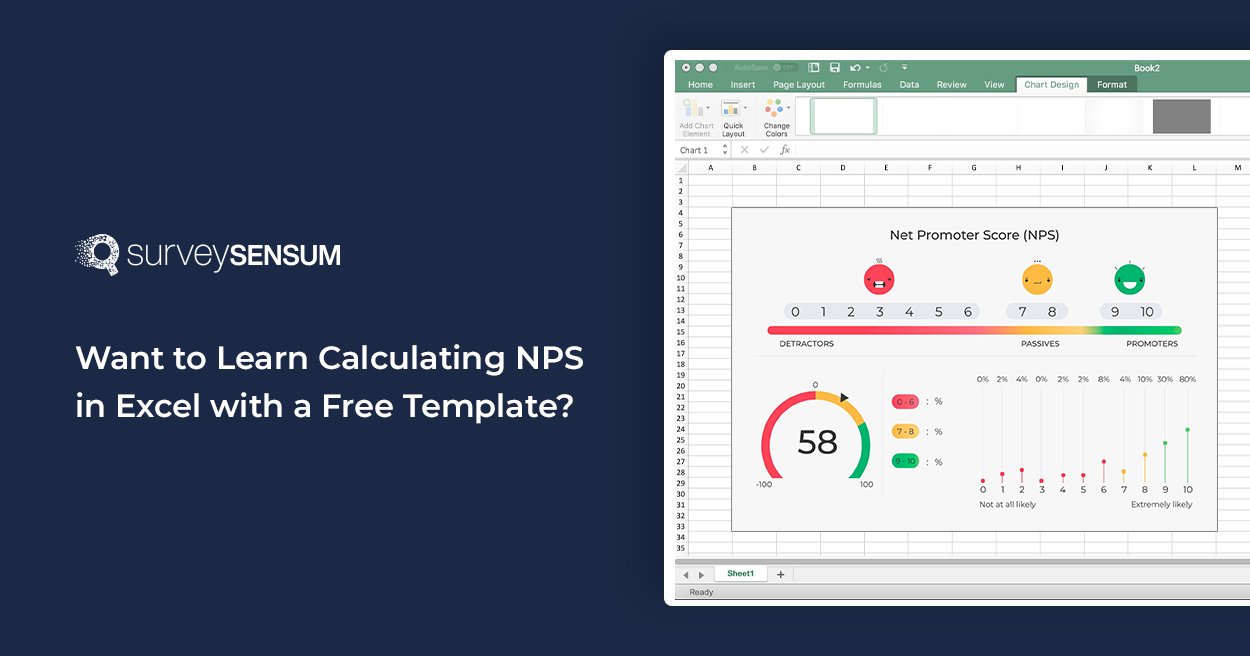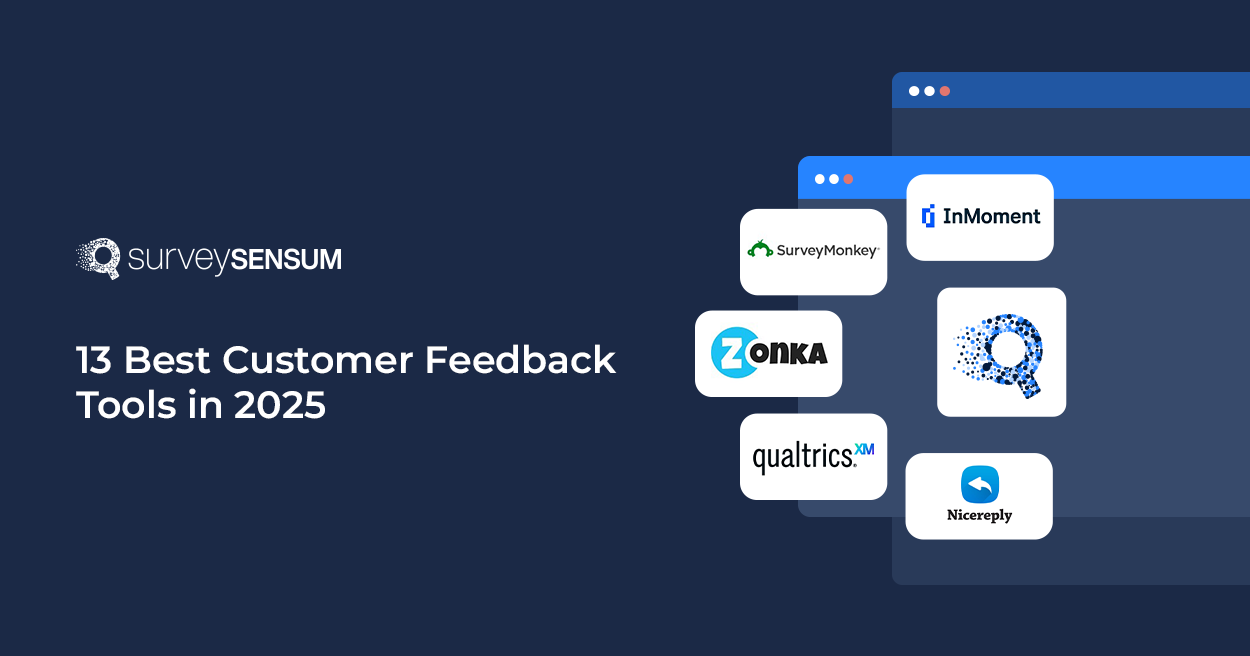
Journey-Based CSAT: Track Experience in Action

Ask the right questions to the customers at the right touchpoint.
– Well, I’ve always emphasized it. Otherwise, the feedback may lose its authenticity.
Gathering customer feedback strategically is crucial for understanding their pain points. However, companies often grapple with determining the optimal timing for survey distribution across the customer journey.
This is where journey-based surveys become invaluable.
So, what exactly is a journey-based survey?
In simple terms, unlike traditional point-in-time surveys, journey-based surveys focus on capturing feedback at various touchpoints throughout the customer journey.
Rather than trying to pinpoint the ideal time for survey deployment, the approach is to send surveys after every significant touchpoint or interaction within the customer journey.
Now, the question arises – why should companies prioritize launching journey-based surveys over surveys scheduled based on their perceived right timing?
We’ll illustrate this through a case study of how a Telecom company boosted its customer satisfaction with journey-based CSAT surveys, using robust CSAT software.
Use Case: Telecom Company
The Challenge
A prominent telecom company was on a mission to boost its customer satisfaction rate by identifying issues in the customer journey.

The customer journey in the telecom industry is multifaceted. It spans across various touchpoints, from initial awareness and consideration to post-purchase support and loyalty.
A typical customer journey in the telecom industry starts with customers discovering the product from different channels like social media or word-of-mouth. From here, after a quick search, the customer either decides to continue to the next touchpoint, i.e., purchase.
And as you can see from the above image, there are 3 buyer journeys:
- Online
- Offline – own stores
- Retailers – 24*7
The customer can buy from any of the above-mentioned channels.
Now, if the customer experiences any type of issue at this touchpoint they will naturally reach out to the customer support team and here they enter the post-purchase services touchpoint. Here, there can be two possibilities for the journey, either the customer renews the service, upon a positive experience, or leaves upon a dissatisfied resolution.
This is where the telecom company was receiving a hefty amount of complaints, at the PURCHASE touchpoint, which resulted in higher customer dissatisfaction and bad word-of-mouth.
But the problem was – they didn’t know what the issue was or where the friction was at its highest across these multiple journeys.
→ So, they wanted to identify customer issues and boost satisfaction across all journeys.
The Solution
Here’s what they did –
- With SurveySensum, they launched journey-based CSAT surveys across all customer journeys to ask customers what is bothering them at which touchpoint.
- And discovered the touchpoints with the most friction in customer journeys with Text Analysis. They started focusing on these:
- Buy: This touchpoint occurs when customers acquire a SIM card from any channel, be it online or through physical retail outlets. The survey deployed at this stage aimed to gauge customer satisfaction with the purchase process.
- Reuse: At this touchpoint, customers decide to reuse the company’s services, such as renewing their subscription or making additional purchases. The survey deployed at this touchpoint sought to understand customers’ satisfaction with the usability and reliability of the services they opted to reuse.
- Post-Customer Support: Following an interaction with a customer support agent, customers enter this touchpoint. The survey deployed here aimed to assess customer satisfaction with the level of assistance provided by the support team.
Now, these journey-based CSAT surveys uncovered A LOT of insights.
Notably, one significant finding emerged concerning the interaction between the company’s services and major retailers, such as 24*7 stores.
Further investigation uncovered the root cause of this issue – delays in updating databases by these retailers, particularly regarding the incorporation of new offers or recharge top-ups into their systems. As a result, customers experienced frustration and inconvenience, leading to negative feedback and potential damage to the company’s reputation.
So, launch journey-based CSAT surveys with SurveySenusm to gather real-time feedback across all customer journeys!
Action Taken
With this information at hand, the company then identified such stores where this issue was occurring majorly. They called for a strategic meeting, at higher levels, with the management of these retail stores to convey these issues and for a fast resolution.
The Result
Implementing these journey-based CSAT surveys helped the company uncover customer pain points and find solutions to customer dissatisfaction. This led to an increase in their CSAT score, a significant decrease in customer complaints, and a huge drop in customer support calls by 1000-1500 every month.
Conclusion
This use case of journey-based CSAT surveys for the telecom industry not only highlights the importance of listening to the voice of your customers but also highlights the importance of listening to it at the right time. Launching journey-based surveys helps you not only gather customer feedback but also the most relevant insights into your customer pain points across all journeys.
But all the efforts are half-baked if they are not accompanied by a robust customer feedback tool, like SurveySensum that will enable you to launch the right survey at the right time, but that’s basic, right?
Well, in addition to creating the most effective surveys, this tool also comes with powerful text analysis software to help you convert insights into actionable plans. And also, the tool provides top CX consultation with the top CX experts who will provide end-to-end support and make your CX mission a success!














